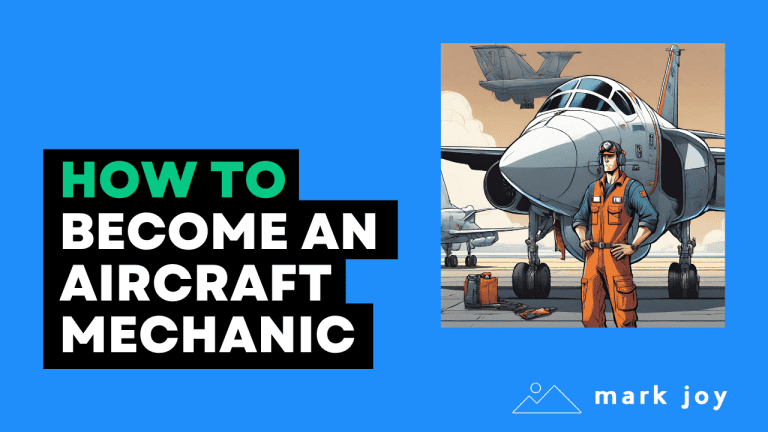Aircraft mechanic tools are the backbone of aviation maintenance. Without the right tools, even the most skilled aircraft mechanic would be up a creek. This blog post is your comprehensive guide to aircraft mechanic tools – from basic hand tools to specialized equipment.
Understanding Aircraft Mechanic Tools
Working on aircraft requires specialized tools designed for the aviation industry’s stringent safety and precision standards. Unlike automotive tools, aircraft mechanic tools often come with specific certifications and tolerances. For example, tools used on aircraft are often calibrated to different torque settings to avoid damaging delicate parts.
Types of Aircraft Mechanic Tools
Aircraft mechanic tools come in a wide range of categories and subcategories, catering to various maintenance tasks. From simple hand tools to complex diagnostic equipment, each tool set serves a purpose in ensuring an aircraft is safe for flight.
Hand Tools
These are the bread-and-butter of an aircraft mechanic’s tool kit. They are essential for routine inspections, basic repairs, and component installations. Some essential hand tools include:
- Wrenches: Aircraft mechanics need various wrenches, including combination wrenches, socket sets, and torque wrenches. Because aircraft use both metric and imperial measurements, it’s essential to have both sets readily available.
- Screwdrivers: Both flat-head and slotted screwdrivers are essential. These screwdrivers often feature magnetic tips to make it easier to handle small screws in tight spaces.
- Pliers: From slip-joint pliers for gripping and turning to needle-nose pliers for detailed work in confined spaces, pliers are versatile tools for any aircraft mechanic.
- Hammers: Aircraft mechanics use various hammers, such as ball-peen hammers for shaping sheet metal and soft-faced mallets to avoid damaging delicate surfaces.
An aircraft mechanic’s work goes beyond general hand tools. Specialty tools are required for the intricate work involved in aviation maintenance.
Specialty Tools
Aircraft mechanics use many specialty tools designed for specific tasks. Here’s a glimpse:
- Rivet Tools: Aircraft construction extensively uses rivets. Mechanics use rivet guns, bucking bars, and rivet sets to install and remove them correctly.
- Safety Wire Pliers: Used for twisting and cutting safety wire, securing fasteners in high-vibration environments like an aircraft engine. This ensures critical components don’t come loose during flight.
- Torque Wrenches: These wrenches are crucial for tightening nuts and bolts to precise torque specifications, preventing damage from over-tightening.
Diagnostic Tools
As aircraft technology evolves, aircraft mechanic tools now encompass sophisticated diagnostic tools. These are essential for troubleshooting complex electrical and electronic systems.
- Multimeters: These are crucial for measuring voltage, current, and resistance in electrical systems.
- Inspection Mirrors: Allow mechanics to see hard-to-reach areas of an aircraft, ensuring every part is in optimal condition.
- Borescopes: These tools provide visual inspections of engines and other internal components, detecting flaws or damage not visible to the naked eye.
FAQs about aircraft mechanic tools
What kind of tools do aircraft mechanics use?
Aircraft mechanics utilize a broad range of tools, encompassing both general hand tools and those uniquely designed for aircraft. You’ll find essentials like wrenches, screwdrivers, and pliers. However, they also use specialty tools such as rivet guns, safety wire pliers, and torque wrenches designed for specific aviation tasks.
What does an aircraft mechanic need?
A successful aircraft mechanic needs more than just tools. Alongside a comprehensive tool supply, they require a deep understanding of aviation technology, airframe and powerplant systems, and safety regulations. Excellent problem-solving skills are crucial for diagnosing and repairing complex aircraft issues, ensuring everything from engines to avionics operates flawlessly.
Strong attention to detail and commitment to safety are non-negotiable, as even minor oversights can have significant implications for flight safety. Proper tool control and organization, often utilizing tool storage solutions like tool chests or tool cabinets, are essential for efficient workflow in the aircraft maintenance environment.
What are aircraft special tools?
Aircraft special tools are purpose-built for particular tasks in aircraft maintenance that general tools cannot perform. These tools often have unique designs, materials, or functionalities. For instance, a rivet gun specifically installs rivets common in aircraft construction. This is essential for maintaining the structural integrity of an aircraft.
What type of aircraft mechanic makes the most?
While salary can depend on various factors, experience plays a role in earning potential within the field. According to the U.S. Bureau of Labor Statistics, the median salary for aircraft mechanics and service technicians was $66,380 in 2022. Some aircraft tool supply providers include Red Box Tools and Foam USA and Red Box Foam.
For aviation tools and resources, Priceless Aviation is another great option. Remember to research tools from different providers and choose those best suited for your specific needs and budget.
Conclusion
Aircraft mechanic tools are more than just tools; they’re the guardians of the sky. As you venture further into the world of aviation maintenance, remember to prioritize high-quality tools from reputable sources and stay informed about new advancements in this exciting field.

